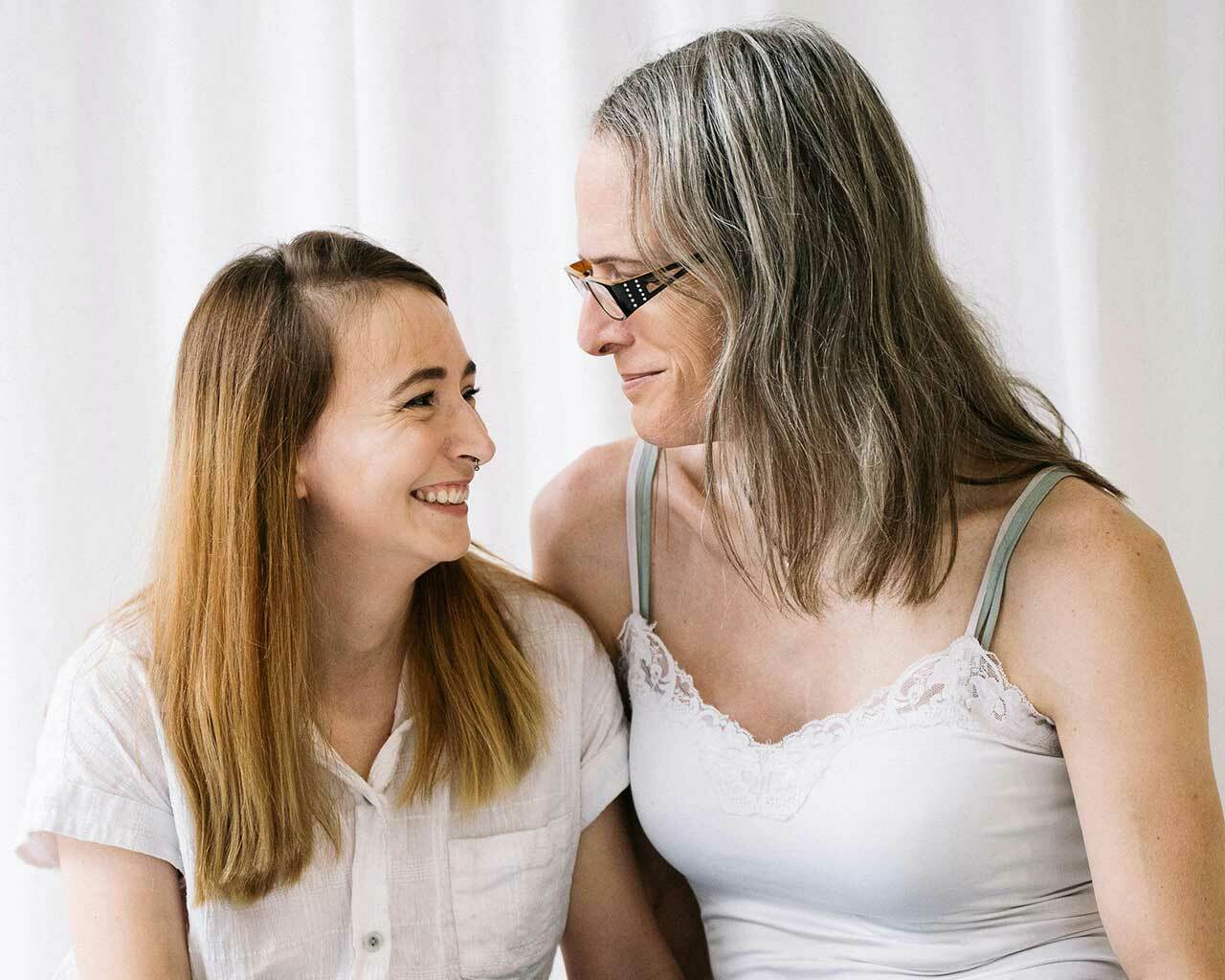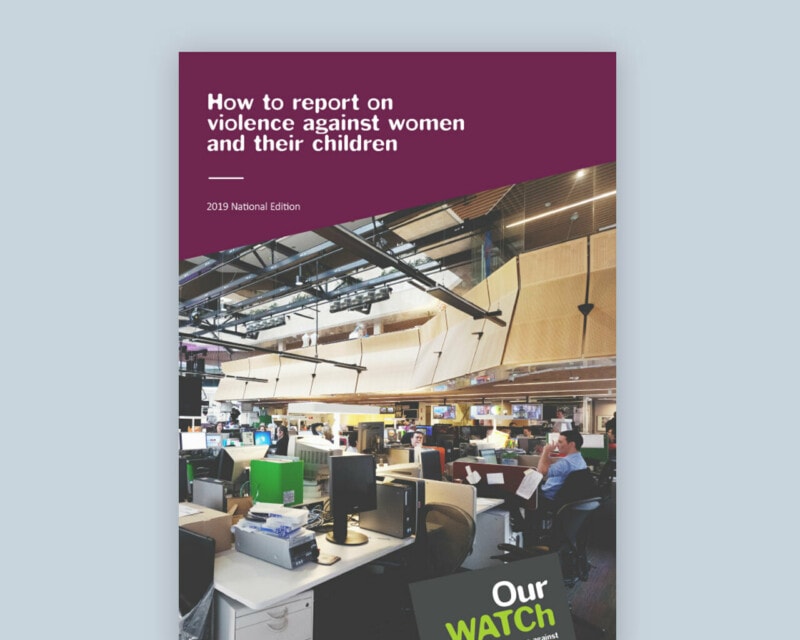On this page
Transgender and gender diverse people, like all people in Australia, are entitled to fair media reporting and representation on stories that include or affect them. How these stories are told affects societal ideas about the experiences of trans and gender diverse people, with real life impacts for this community.
This guide will help journalists deepen their reporting on trans and gender diverse communities and contribute to a better public understanding of the challenges this community faces.

Media reporting on violence against transgender and gender diverse communities
The guide features:
- information to understand what drives violence
- tips for taking care in representation and story selection
- guidance on language and framing
- tips for building relationships and interviewing sources
- how to choose respectful imagery
- how to avoid disinformation and backlash
- guidance on offering support options
- a list of organisations to contact for comment.
There is significant overlap in the gendered drivers of violence against women and the drivers of violence against lesbian, gay, bisexual, intersex, queer and asexual (LGBTIQA+) people, including trans and gender diverse people. These drivers include gender inequality.
Trans and gender diverse people experience high rates of discrimination and gender-based violence, including domestic and family violence, sexual violence and harassment, in both private and public spaces, including workplaces, universities and online. Most of this violence is perpetrated by cisgender men.
Violence against trans and gender diverse people may be normalised, minimised, condoned or accepted because there are messages in society that trans people’s bodies, identities and relationships are not worth as much as others.
These messages perpetuate discrimination and create a culture where violence against transgender people is seen as acceptable or justified.
The media has a powerful role to play in challenging attitudes and beliefs that dehumanise or devalue trans and gender diverse people. It can also draw attention to discrimination faced by trans and gender diverse communities, and can counter harmful myths that shape how the public views responsibility for violence.
Trans and gender diverse people are an intrinsic and vibrant part of human diversity. They also experience rates of violence at much higher rates than the general population. Media reporting which is informed and respectful of trans people and their experiences is fundamental to changing attitudes and ensuring equality for all in our society. I encourage all media representatives to read and use these guidelines in your reporting to improve and strengthen your work.
Dr Anna Cody, Sex Discrimination Commissioner, Australian Human Rights Commission
Highlighting positive stories and experiences of trans and gender diverse people can shift societal perceptions and promote greater acceptance and understanding. Media can also empower these communities by providing a platform for their voices to be heard and respected.
Everyone, regardless of gender, has the right to live in dignity, and be safe, free from harassment, intimidation or discrimination.
Equitable, accurate and respectful reporting on trans and gender diverse communities plays a pivotal role in reducing violence and fostering a more gender-equal and inclusive society.
Our Watch led the creation of these guidelines in consultation with Transgender Victoria, The Trans Justice Project, Zoe Belle Gender Collective, Black Rainbow, ACON, Rainbow Health Australia and Transcend Australia, as well as representatives from the community and the media.
Key statistics
In the largest study of Australian LGBTIQ+ people’s health and wellbeing, almost 4 in 10 non-binary participants, 3 in 10 trans men and 1 in 5 trans women reported experiencing physical violence from a family member.
In a national study on sexual health, over 50% of trans and gender diverse people reported experienced sexual violence or coercion. This is compared to around 13% of the general population.
In a recent national study about anti-trans violence, 1 in 2 trans people had experienced anti-trans hate and 1 in 10 trans people had experienced anti-trans violence.
Tips for reporting on violence against trans people
Interviewing sources
- Centre trans and gender diverse voices in stories about them and use expert, informed voices.
- Ensure your interactions with case studies and sources are respectful, sensitive and transparent throughout the reporting process. Take time to establish relationships and build trust.
- Avoid assumptions about names, gender and pronouns. Ask your interviewee their name and pronouns and only use those details.
- Be mindful of their safety and develop a safety plan. Check in with them after the story is published.
Responsibilities in reporting
- Where practical acknowledge your positionality in your reporting.
- Avoid referring to someone’s transgender experience if not relevant to the story. However, a lack of reporting on violence against this community also leads to missed opportunities for the public to understand why it occurs.
- Consider if it is necessary to use ‘coming out’ narratives.
- Avoid reporting that reduces a trans or gender diverse person’s experience to physical appearance only.
- Your story may receive backlash. Put backlash mitigation and response strategies in place. Look after yourself, your sources, and your colleagues.
Respectful and evidence-based reporting on violence
- At the heart of your reporting is a person. Describe violence in a fair, accurate and respectful way, without graphic or sensationalist language such as ‘butchered’, hacked’, ‘mutilated’ and so on.
- Ensure your framing keeps the perpetrator in view to acknowledge violence is always a choice.
- Does your reporting or quotes from sources reinforce harmful stereotypes or use victim-blaming or perpetrator-excusing language? Consider whether it is necessary to quote sources who use demeaning and problematic language.
- Where legally possible, use statistics to demonstrate prevalence and to contextualise the story. Draw links between violence against trans people and gender inequality, rigid gender stereotypes and high levels of transphobia.
- Consider the impact of images on survivors of violence, their families and other members of the community. Avoid cliched photos or descriptions of transgender people, including ‘before and after’ images.
- Include references to appropriate LGBTIQA+ inclusive support options for those experiencing violence, as well as other services, including for perpetrators concerned about their behaviour.
Reporting to prevent further violence
- Diversify story selection to show that trans people are involved in all facets of public life.
- Improve media representations by positively reporting on transgender people, their relationships, community connections and contributions.
- Incorporate trans and gender diverse people into your source base to consult on a range of stories.
Webinar
Media reporting to prevent violence against trans and gender diverse people and communities
Related

6 minute read
Survivors play a critical role in the change needed to end violence against women and their children.

3 minute read
Evidence-based tips for journalists reporting on violence against women.